Verbena - The Ultimate Growing Guide from Proven Winners®
For continuous color in the landscape, few plants rival verbena. This low-maintenance annual or perennial needs little supplemental care, yet rewards with months of bloom.
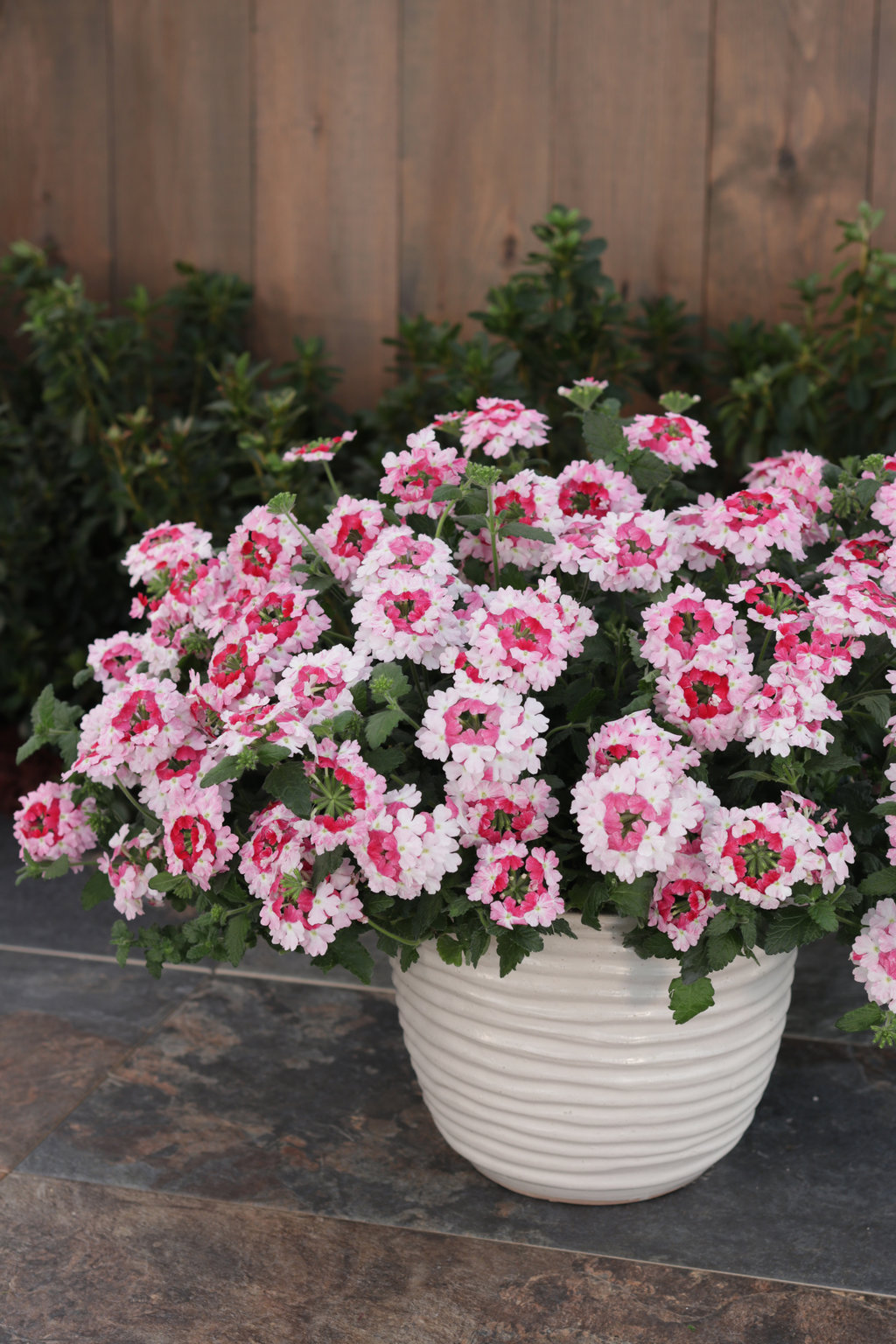 Buy verbena plants – Order flowers online and have them shipped right to your door
Buy verbena plants – Order flowers online and have them shipped right to your door
Verbena flowers come in an array of cheerful hues including red, pink, apricot, lavender, purple, blue, white and bicolors. Clusters of small star-shaped flowers on mounding, trailing or upright plants are complemented by green lanced-shaped leaves with finely toothed edges.
Use verbenas in containers, hanging baskets, borders or mass plantings. Highly attractive to butterflies and other insect pollinators, this durable plant is tolerant of different soils, heat and drought. Most are grown as annuals, but some common types are hardy in USDA zones 7-11.
PLANTING & CARING FOR VERBENA
How to plant: Choose a site with good air circulation that receives at least 6-8 hours of full sun a day. Follow these steps and space 12-18” apart, depending on the variety.
- Loosen the soil in the planting area to a depth of 6-12”.
- Remove the plant from the nursery pot and loosen roots if potbound.
- Set plant in the hole with the top of the root ball level with the surrounding soil.
- Backfill the hole with soil and tamp down lightly to remove air pockets.
- Water regularly until plants are established.
Soil: Verbena thrives in soil amended with compost, but can adapt to many soil types as long as there is good drainage. Compacted or clay soil can lead to root rot.
Watering: Verbena does best in moderately moist soil, but can tolerate some drought. Too much water can result in root rot or mildew. Provide regular water and allow the soil to dry out between waterings. Irrigate more frequently during prolonged heat or dry spells.
Fertilizing: For best flowering, apply a slow-release all-purpose fertilizer according to instructions, or use a water-soluble fertilizer once a month during the growing season. Learn more in this guide to fertilizing annual plants.
Pruning: Deadhead spent flowers. Trailing and groundcover types can be trimmed back several times during the growing season to stimulate new growth and flowers. Cut back up to 1/4 of the stem length. Plants can be trimmed at any time if they outgrow their space.
VERBENA PLANT TYPES
Verbenas come in different types. Here are some of the most commonly grown:
Purpletop verbena (V. bonariensis), also known as tall verbena, is an upright form with purple flowers. Hardy in USDA zones 7-11, plants grow 3-6’ tall and 1-3’ wide. Highly attractive to butterflies and other pollinating insects, the open airy form makes this useful as a background or structural plant.
Garden verbena (V. x hybrida), with a mounding or trailing habit, is the type most commonly grown. Plants can reach 6-18” tall and 12-30” wide. Hardy in USDA zones 8-11, this tender perennial is most often treated as an annual. Dozens of varieties come in a range of flower colors. Popular for hanging baskets, window boxes, container gardens and landscape beds.
Tuberous verbena (V. rigida), also known as slender vervain, is heat and humidity tolerant, making it a great plant for the deep south. Plant in well-drained soils in full sun. This tender perennial is hardy in USDA zones 7-10, but can be grown as an annual in cooler climates.
TRY THESE PROVEN WINNERS® VARIETIES
Verbena comes in different forms and flower colors. Add these to your landscape:
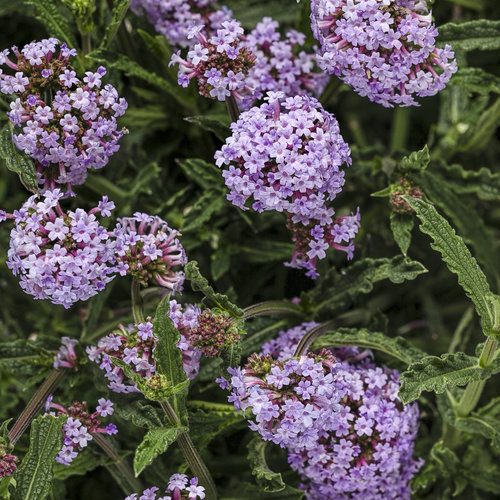 Meteor Shower® has a more compact form than other tall verbenas, with a denser, more vigorous growth habit. Clusters of pale lavender flowers bloom continuously from planting until frost. Use as a thriller element in containers, plant in a mixed border or mass in the landscape. |
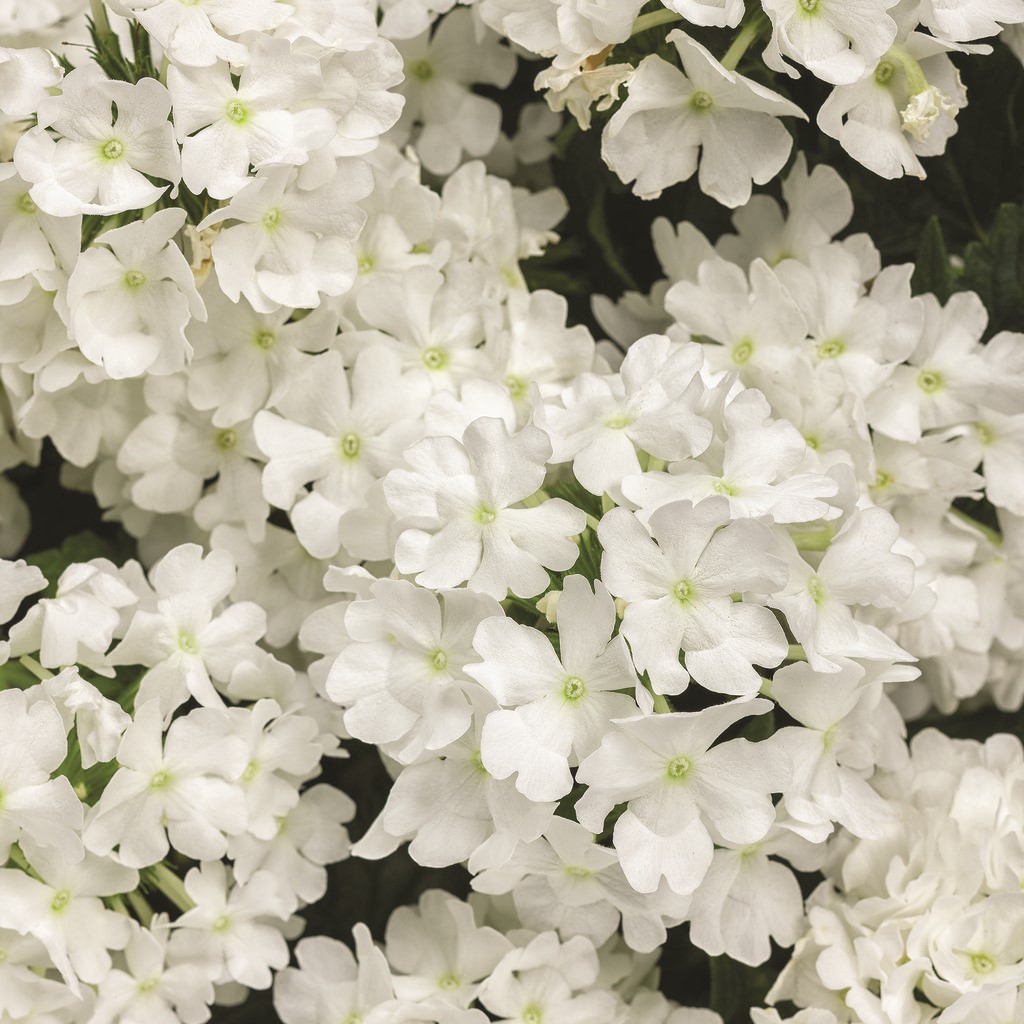 Superbena® Whiteout™ is a vigorous trailing annual with superb heat tolerance and mildew resistance. Self-cleaning flowers bloom nonstop from planting until frost. The pure white blooms add elegance to any style landscape. Use as a spiller element in containers or mass as a groundcover. |
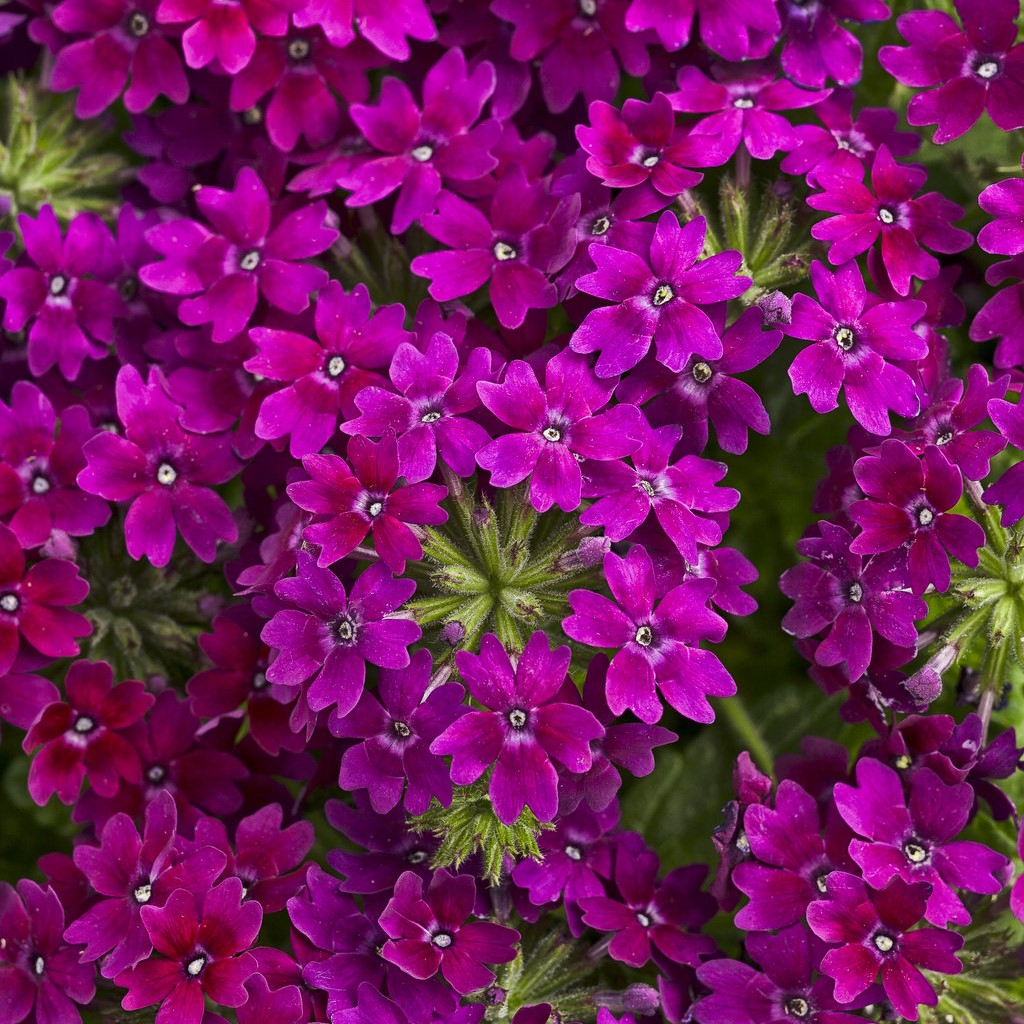 Superbena® Royale Plum Wine produces circular clusters of velvety plum flowers from planting until frost. The Royale series has a compact habit early on that becomes more trailing as the season progresses. Suitable as a filler plant or to spill over the edge of containers. Use this annual in mass plantings, container combinations or to edge borders. |
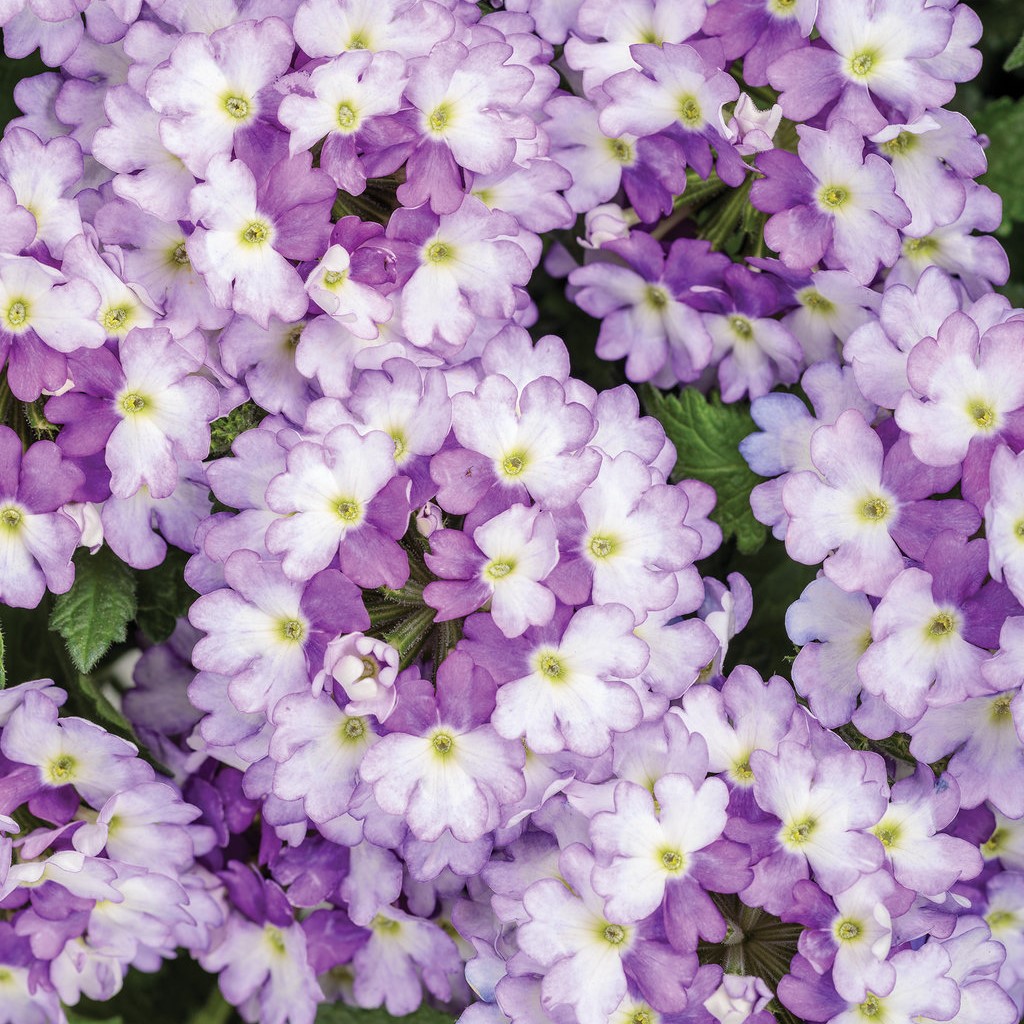 Superbena Sparkling® Amethyst has large clusters of white and amethyst flowers that create an eye-catching two-toned effect in the landscape. Vigorous plants flower all summer without deadheading. Trim plants back occasionally to encourage more branching, a fuller habit and more flowers. Looks stunning in combination plantings, hanging baskets and containers. |
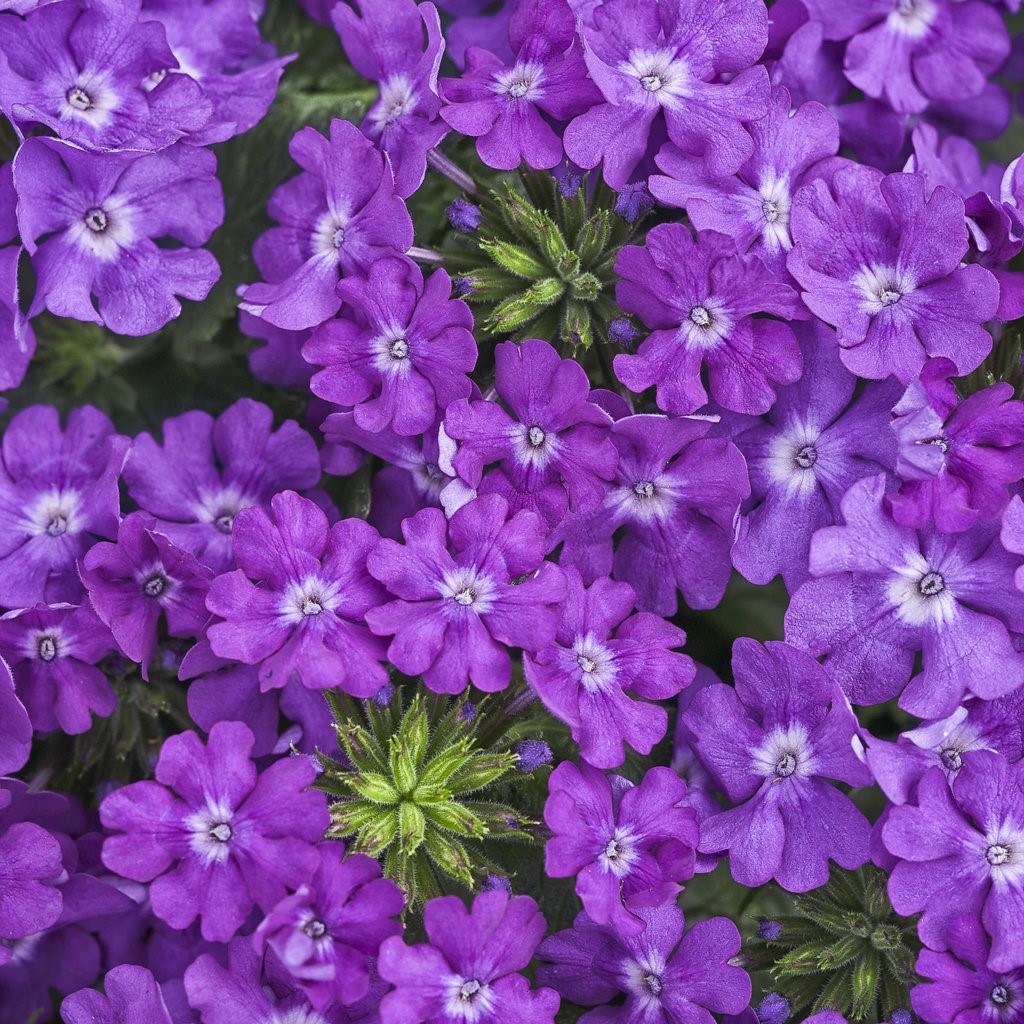 Superbena® Violet Ice has deep lavender flowers with a large white eye that creates a riveting effect. Blooms may be somewhat variable. Allow enough room to accommodate the vigorous growth so nearby plants aren’t overwhelmed. Use this trailing annual at the front of beds or as a spiller element in containers. |
 Superbena® Raspberry forms dense clusters of rich raspberry-pink flowers, with nonstop bloom from planting until frost. The bold color pairs well with contrasting hues of chartreuse, dark burgundy or blue. Use this heat-tolerant, mildew-resistant variety in hanging baskets, as a groundcover or in mass plantings. |
VERBENA FAQ’s
Is verbena an annual or perennial?
The most commonly grown hybrids are usually treated as annuals. Purpletop verbena is perennial in warmer zones.
Do deer eat verbena?
Verbena is considered deer-resistant, though plants may experience some browsing if other food is scarce.
Does verbena need full sun?
This sun lover flowers best with at least 6-8 hours of direct sun every day. See more full-sun annuals.
Does verbena grow back every year?
Annual forms last through the current growing season, while perennial types return the following year. Some are short-lived perennials, lasting just 3 or 4 years.
Does verbena reseed itself?
Purpletop verbena resows readily in warmer regions. Other types have variable rates of self-sowing. Annual hybrids are much less likely to reseed the following year.
How long does verbena bloom?
When grown in optimal conditions, annual verbena can bloom continuously from the time of planting until the first hard frost. Perennial types flower from summer into fall.
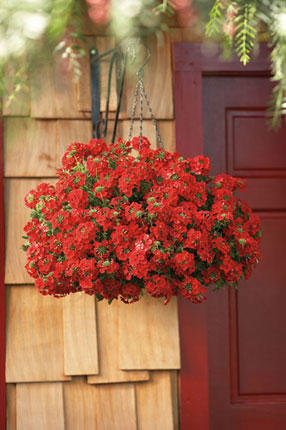 HOW TO USE VERBENA IN YOUR LANDSCAPE
HOW TO USE VERBENA IN YOUR LANDSCAPE
Verbenas can be used in many different ways. Here are some ideas on how to use them in your yard:
- Plant groundcover or trailing types in containers and hanging baskets.
- Use trailing forms in window boxes in combination with other plants with similar needs.
- Mass a groundcover type along a slope for a sea of color all season long.
- Use a low-growing groundcover or trailing type at the front of a mixed border.
- Purpletop verbena can be used as a structural element towards the back of a border.
- Use a groundcover or trailing type as a bedding plant to fill in gaps or to adorn an island bed.
- Adorn pathway edges with low-growing verbenas for months of continuous color.
Related: Tall Annuals for Borders
COMPANION PLANTS
Many other plants complement verbena in the landscape. Here are some suggestions:
Combine purpletop verbena with other plants with fall interest for a late-season display. such as:
- Prairie Winds® ‘Desert Plains’ fountain grass
- Kickin® Lilac Blue aster
- Quick Fire® panicle hydrangea
- Rock ’N Round™ ‘Pure Joy’ stonecrop
Groundcover or trailing verbenas pair well in the landscape with other long-blooming plants such as:
- Sweet Romance® lavender
- Pugster Blue® butterfly bush
- Oso Easy Lemon Zest® rose
- Garden Girls™ Party Girl tall garden phlox
For containers, combine trailing verbenas as a spiller element with other plants such as:
- Luscious® Berry Blend™ lantana
- Supertunia Mini Vista ® Violet Star petunia
- Proven Accents® Silver Bullet® wormwood
- Angelface® Super Blue summer snapdragon
Want to learn more?
Low-Maintenance Annual Flowers
Petunia Flowers
Superbells Flowers



 HOW TO USE VERBENA IN YOUR LANDSCAPE
HOW TO USE VERBENA IN YOUR LANDSCAPE
